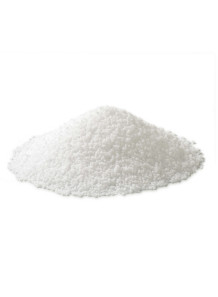Heptadecanoic Acid (C17:0, 98%)
- Product Code: 233205
Pre-incubating macrophages with C 17:0 suppresses Listeria monocytogenes replication and boosts pathogen-clearing responses.

Pre-incubating macrophages with C 17:0 suppresses Listeria monocytogenes replication and boosts pathogen-clearing responses.
Topical benefits of Heptadecanoic Acid (C 17:0)
| Benefit cluster | Key research insights | Practical formulation take-aways |
|---|---|---|
| Antimicrobial & skin-immune support | Pre-incubating macrophages with C 17:0 suppresses Listeria monocytogenes replication and boosts pathogen-clearing responses. | Helps curb bacterial/yeast overgrowth that triggers rashes, acne, malodour or secondary infection—useful in deodorants, face washes, scalp or wound-dressing products. |
| Anti-inflammatory (“inflamm-aging” control) | The same studies show C 17:0 modulates Toll-like receptors, up-regulates anti-inflammatory cytokines and lowers ROS in activated macrophages. | Can soothe redness or itching and slow oxidative stress-driven ageing—especially valuable in post-sun or pollution-protection formulas. |
| Barrier reinforcement | Odd-chain fatty acids (C15–C23) make up ≈30 % of stratum-corneum free fatty acids and help pack lipid lamellae more tightly. | Adding 0.2–1 % C 17:0 in the oil phase can restore the native fatty-acid profile, reduce TEWL and improve suppleness. |
| Mitochondrial & antioxidant support | Reviews on odd-chain fatty acids note that C 17:0 feeds the citric-acid cycle and lowers mitochondrial ROS under nutrient stress. | Provides a stable antioxidant “assist” in repair serums without the oxidation liability of unsaturated oils. |
| High-stability, cushiony emollient | Melting point ≈ 61 °C; saturated, odourless white solid. | Creates a soft, “cushion” film like stearic acid but is slower to turn grainy and far less prone to rancidity—ideal for day/night creams or protective balms. |
Formulation notes
-
INCI / CAS: Heptadecanoic Acid (CAS 506-12-7). No specific restrictions in EU, US or ASEAN cosmetic lists.
-
Recommended loadings: 0.1–1 % w/w in leave-on products; up to ~2 % in rinse-off formulas.
-
Processing tips
-
Melt C 17:0 together with the main emollient (e.g. squalane, caprylic/capric triglyceride) at ≥ 70 °C until clear.
-
Cool under moderate shear; very rapid cooling or weak agitation may leave coarse crystalline “bloom.”
-
For clear systems, pre-solubilise in 0.5–1 % PEG-7 glyceryl cocoate or another non-ionic surfactant before adding to the water phase.
-
A small dose of mixed tocopherols (0.05–0.1 %) protects colour and keeps the base bright over shelf life.
-
-
Compatibility: Works well with niacinamide, synthetic ceramides, phenoxyethanol/chlorphenesin preservative blends, and most common UV filters.
Usage: For any skin care product
Mixing method: dissolved in oil
Usage rate: 1-20%
Product characteristics: : White flake powder
Solubility: Can dissolve in oil
Storage: If you want to keep it for the long term Store at room temperature. At least 24 months old
INCI Name : Heptadecanoic acid
| Mechanism | - |
| Appearance | - |
| Longevity | - |
| Strength | - |
| Storage | - |
| Shelf Life | - |
| Allergen(s) | - |
| Dosage (Range) | - |
| Recommended Dosage | - |
| Dosage (Per Day) | - |
| Recommended Dosage (Per Day) | - |
| Mix Method | - |
| Heat Resistance | - |
| Stable in pH range | - |
| Solubility | - |
| Product Types | - |
| INCI | - |
Purchase History for
Cart
No products



